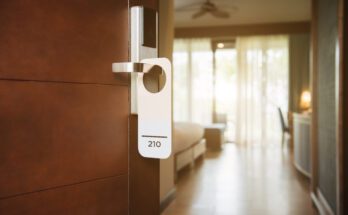Detroit’s Playoff Push Was Fleeting, but Jeimer Candelario’s Breakout Is Real
The 2019 season wasn’t an easy one for Jeimer Candelario. The Tigers demoted him not once, but three times to Triple-A Toledo amid struggles at the big league level, and he also missed time due to shoulder inflammation. He quickly hit well enough in the minors to get his job back in the majors, posting a .320/.416/.588 line over 39 Triple-A games. He could never make that stick when he got called up though, finishing with a .203/.306/.337 line in 94 games, good for a 72 wRC+. Once an impressive offensive prospect, those numbers didn’t match Candelario’s pedigree, and neither did the .225/.317/.393 line the season before.

These are the kinds of numbers the Tigers have been waiting for Candelario to put up since they acquired him from the Cubs in a deal for Justin Wilson and Alex Avila at the 2017 trade deadline. Candelario entered that season ranked by Eric Longenhagen as the fourth-best prospect in a Cubs system that still included Eloy Jimenez and Ian Happ. His star was dimmed because he was regarded as a first base prospect, but even with his defensive limitations, his balanced set of skills hitting from both sides of the plate gave him an everyday player outlook. When the rebuilding Tigers brought him aboard, they were eager to give him that role while they waited patiently for him to grow into it. It’s taken a bit longer than hoped, but it seems like he finally has.
| Year | PA | AVG | OBP | SLG | BB% | K% | ISO | BABIP | wRC+ | WAR |
|---|---|---|---|---|---|---|---|---|---|---|
| 2016 | 14 | .091 | .286 | .091 | 14.3% | 35.7% | .000 | .167 | 1 | -0.2 |
| 2017 | 142 | .283 | .359 | .425 | 9.2% | 21.1% | .142 | .351 | 112 | 0.5 |
| 2018 | 619 | .225 | .317 | .393 | 10.7% | 25.9% | .169 | .290 | 94 | 2.5 |
| 2019 | 386 | .203 | .306 | .337 | 11.1% | 25.7% | .134 | .262 | 72 | 0.3 |
| 2020 | 174 | .333 | .391 | .572 | 8.1% | 21.8% | .239 | .404 | 158 | 1.7 |
Behind the slash line, there is a mix of positives and negatives. His strikeout rate is down, but so is his walk rate. His isolated power is way up, but his BABIP is a flashing yellow caution light. There have certainly been more foolproof 44-game breakouts than Candelario has had, so it’s fair to wonder what his line looks like once we’re further removed from his recent homer surge and his BABIP returns to earth’s atmosphere. Statcast, however, says the improvement in Candelario’s contact quality is actually borne out pretty well in his raw numbers.
| Year | Exit Velocity | Hard Hit% | Barrel% | xBA | xSLG | xwOBA |
|---|---|---|---|---|---|---|
| 2018 | 87.2 (22nd) | 33.6% (31st) | 6.0% (38th) | .209 (2nd) | .351 (9th) | .295 (12th) |
| 2019 | 88.2 (28th) | 33.8% (22nd) | 5.9% (31st) | .233 (12th) | .374 (9th) | .311 (20th |
| 2020 | 90.7 (79th) | 47.1% (85th) | 11.6% (82nd) | .315 (91st) | .550 (86th) | .390 (85th) |
We’ve seen enough of the season to start giving Candelario serious credit here. He’s making hard contact much more often than he has in the past, and he’s hitting the ball at the right angle to do damage. Candelario owns a 28.3% line drive rate in 2020, an improvement of more than five points from last year and the 10th-highest percentage in baseball. Those line drives have mostly come from his fly ball rate, something you’d typically prefer not to see with someone with this high of an average exit velocity. In Candelario’s case, however, a large number of the fly balls he’s cut out are the bad ones. In 2019, Statcast categorized 30.4% of his batted balls as ones he was “Under” — infield flies and outfield pop-ups that usually aren’t leaving the yard. This year, that number is down to just 19.5%. Here are Candelario’s radial charts from 2019 and 2020 visualized:


Those gray dots representing outs in the air are much more sparse this season, while the colored dots that represent hits in the line drive and barrel zones have remained.
Along with being able to achieve better contact, there is also strong evidence that Candelario has greatly improved his decision-making at the plate. Compared with last year, his chase rate has fallen by more than four points, while his in-zone swing rate is up by nearly six points. A number of things could be influencing him in the right direction there, but one particularly interesting potential cause is an improved ability to discern fastballs from changeups, particularly on the edges of the plate. On fastballs in the strike zone, Candelario has raised his swing rate from 64% to 75.4%, while his swing rate on in-zone changeups has hardly budged. When it comes to pitches outside the zone, his chase rate against fastballs has dipped slightly from 23.8% to 19.7%, while his chase rate against changeups has fallen all the way from 43.5% to 27%.
Little things like these can make a big difference. If you’re taking a lot of fastballs in the zone, that probably means you’re taking strikes early in the count. You fall behind, which means you have to become more aggressive later in the count against pitches you really shouldn’t be swinging at. We can see this play out in Candelario’s Swing/Take profile from last season, courtesy of Statcast.
| Zone | Swing% | League Avg | Run Value |
|---|---|---|---|
| Heart | 68% | 73% | -8 |
| Shadow | 46% | 53% | -22 |
| Chase | 29% | 24% | 9 |
| Waste | 13% | 7% | 4 |
This is the profile of an uncomfortable hitter. Candelario didn’t attack when he should have, and he didn’t have the ability to lay off the put-away pitches that came later. The table above doesn’t show someone who’s confident at the plate. This one of his Swing/Take profile this season, however, does.
| Zone | Swing% | League Avg | Run Value |
|---|---|---|---|
| Heart | 77% | 72% | 6 |
| Shadow | 49% | 52% | -4 |
| Chase | 19% | 22% | 6 |
| Waste | 5% | 6% | 3 |
Last season, Candelario’s -17 Swing/Take runs ranked 286th out of 300 hitters who qualified, according to Statcast. This year, his +12 Swing/Take runs rank 18th. That suggests that his decision-making at the plate has improved much more than his raw strikeout and walk numbers may indicate. His overall swing and contact rates may both be within a point of where they were last year, but the quality of the pitches Candelario is swinging at is much better, and as a result, his contact is much harder.
None of this should come as a huge surprise. When he wrote Candelario’s aforementioned prospect evaluation in 2017, Longenhagen had no shortage of compliments to give him — good bat control, good adjustment to offspeed pitches, solid power, and a strong eye for the zone. Those are qualities that typically make someone a safe bet to hit enough to stick in the majors. But it doesn’t guarantee someone’s development is going to be linear, just as no rebuild guarantees an end date. It took a few years, but Candelario has finally found his footing. Perhaps the Tigers will soon, too.



